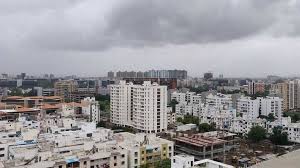
India, the world’s largest democracy, is a rising power in the global economy. With a population of over 1.4 billion people and a rapidly growing economy, India is expected to play an increasingly important role in the world.
India’s Economic Growth
India’s economy has been growing rapidly in recent years. The International Monetary Fund (IMF) projects that India’s economy will grow by 7.3% in 2023, making it the fastest-growing major economy in the world. India’s economic growth is driven by a number of factors, including a large and young population, a growing middle class, and increasing government investment in infrastructure.
India’s Economic Strength
India has a number of strengths that make it a competitive player in the global economy. These strengths include:
- A large and diversified economy: India’s economy is the world’s sixth largest by nominal GDP and third-largest by purchasing power parity (PPP).
- A large and growing middle class: India’s middle class is estimated to be over 300 million people and is expected to grow to 600 million by 2030.
- A young and skilled workforce: India’s population is young and growing, with a median age of 27.5 years. India also has a large pool of skilled labor, with over 100 million people working in the IT and IT-enabled services sector.
- A strong entrepreneurial culture: India has a strong entrepreneurial culture, with over 50 million startups.
- A growing domestic market: India’s domestic market is one of the fastest-growing in the world.
- A strategic location: India is located strategically between the Middle East, Asia, and Africa.
India’s Role in Global Trade
India is a major player in global trade. India is the world’s sixth-largest exporter and seventh-largest importer. India’s major trading partners include China, the United States, the United Arab Emirates, and Germany.

India’s Foreign Investment
India is a major recipient of foreign direct investment (FDI). In 2022, India received $83.57 billion in FDI. India’s major FDI sources include Singapore, Mauritius, the United States, and the United Kingdom.
India’s Challenges
India’s economic growth is impressive, but the country also faces a number of challenges. These challenges include:
- Poverty: India is home to a large number of people living in poverty.
- Unemployment: India’s unemployment rate is high, especially among young people.
- Infrastructure: India’s infrastructure is underdeveloped, which can hinder economic growth.
- Corruption: Corruption is a problem in India, which can discourage investment.
Despite these challenges, India is well-positioned for continued economic growth. India’s strong fundamentals, such as its large and growing population, its young and skilled workforce, and its strong entrepreneurial culture, will continue to drive economic growth.
India’s Future Role in the Global Economy
India is expected to play an increasingly important role in the global economy in the years to come. India is expected to become the world’s third-largest economy by 2030. India is also expected to play a leading role in emerging technologies such as artificial intelligence, renewable energy, and biotechnology.
India’s rise as a global economic power will have a significant impact on the world. India will become a major source of economic growth and a leader in innovation. India will also play an increasingly important role in global trade and diplomacy.
Conclusion
India’s rise as a global economic power is a significant development that will have a profound impact on the world. India’s strong fundamentals, its young and skilled workforce, and its growing domestic market will continue to drive economic growth. India is expected to become a major source of economic growth, a leader in innovation, and a key player in global trade and diplomacy.



